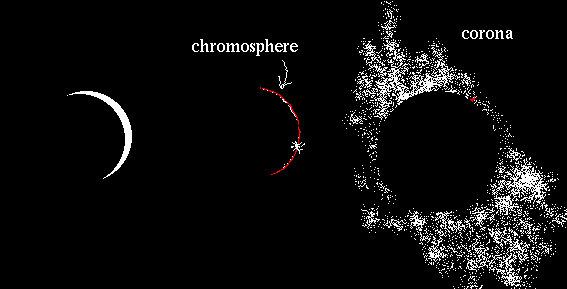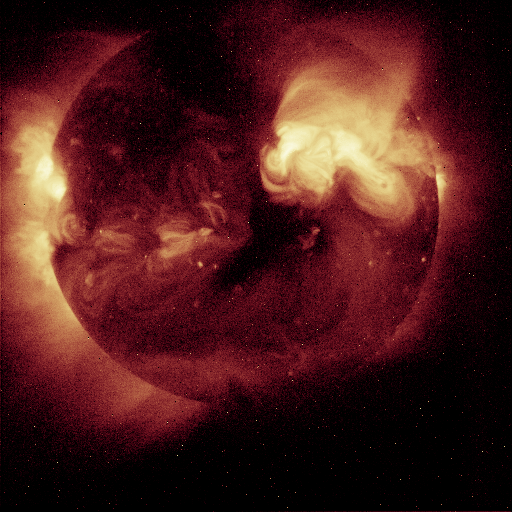
You can see it during an eclipse. It is white.

It is very much less dense than photosphere. In fact it is made of practically nothing!
It is very hot. (106 K).
That means that the particles in the corona have very high random velocities. But since there aren't many particles, the energy per cubic meter is low.
The energy to heat up the corona is thought to be supplied by the magnetic activity of the Sun. Since it is so hot, the corona has highly ionized atoms that emit x-rays.

One can photograph the corona during an eclipse. Here is a photo from the 1991 eclipse . (Copyright Steve Albers. This is a composite made from five separate photos. See notes.) Here is a photo from the 1977 eclipse . One can also take a photo of the corona without an eclipse . by blocking out the photosphere with a special telescope called a coronagraph.
The top of the corona is constantly flowing out into space, where it becomes the solar wind . The solar wind consists of charged particles (mostly protons and electrons) flowing outward from the Sun. Near the Earth, the particles move at velocities of roughly 400 km/s. It is partly responsible for the tails of comets. Here for instance is a picture of Halley's comet. The tail consists of gasses and dust. The gasses are pushed away from the Sun by the solar wind. (The dust is pushed away by the pressure of sunlight.)
Updated 8 October 2007
Davison E. Soper, Institute of Theoretical Science, University of Oregon, Eugene OR 97403 USA